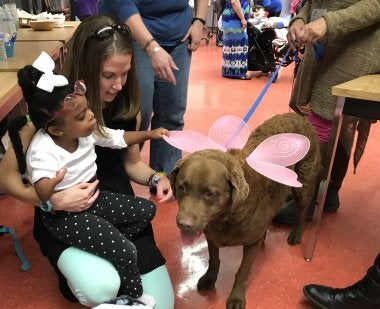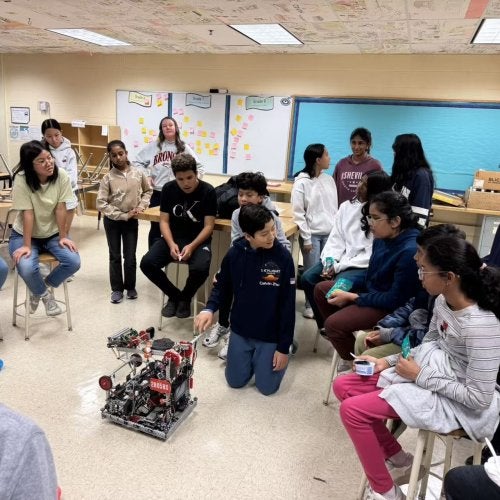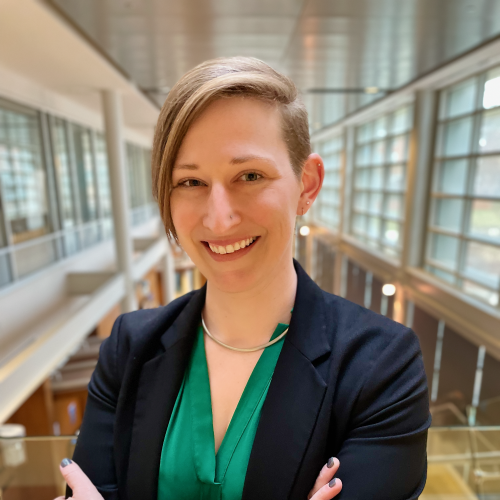

University of Maryland Project Receives $2.2M Award to Support Learning for Deafblind Children

Contact: Audrey Hill 301-405-3468
COLLEGE PARK, Md. – A University of Maryland College of Education project that provides support for deafblind children and their families has received a combined $2.2 million in federal and state support for a five-year period.
The Connections Beyond Sight and Sound: Maryland and D.C. Deaf-Blind Project (CBSS), which is a partnership between UMD and the Maryland State Department of Education, received an award of approximately $1.1 million from the U.S. Department of Education’s Office of Special Education Programs and another $1.1 million award from the MSDE Division of Early Intervention and Special Education Services. The grants support the project’s work to improve learning and outcomes for children in Maryland and Washington, D.C. who have combined vision and hearing loss.
Connections Beyond Sight and Sound provides technical assistance, training, and an array of developmental, educational, service and socialization opportunities to some 240 deafblind children, and to those who support, care for and teach them. The program, which is overseen by UMD’s College of Education, works with deafblind individuals ranging in age from birth to age 21, and with their teachers, families and caregivers in schools, homes, and the community.
Approaches developed for children who have only vision loss or only hearing loss are often not effective for deafblind children. In addition, about two-thirds of children who are deafblind also have cognitive and/or physical disabilities and may require more intensive and specialized educational support.
Thus the Connections Beyond Sight and Sound program uses expertise developed within the program to train teachers and families in strategies they can use to help these complex-needs children learn. This includes helping those deafblind children who receive their special education services primarily in general education classrooms, as well as those who receive services in more specialized settings.
“Deafblind children with severe learning problems are the 1 percent of the 1 percent, in terms of having profound low-incidence disabilities,” said Donna Riccobono, director of CBSS. “We are the bridge to help teachers take standard curriculum and make it meaningful for the students; for instance, we help teachers take a science lesson and demonstrate how to modify it and make it meaningful for students with multiple disabilities.”
There are many causes for dual vision and hearing loss in children, says Riccobono, who pointed out that preemies are being saved earlier than previous generations and sometimes have resulting hearing and vision loss. Other causes of deafblindness include trauma to the placenta, traumatic brain injuries, and hereditary syndromes.
“Children with these kinds of multiple disabilities don’t have the advantage of incidental learning, which is what one learns in passing. Without helping to ensure deafblind children can find meaning in their worlds, they are only living to the tips of their fingers; they don’t know what’s happening beyond that,” Riccobono added.
One essential component of improving learning and quality of life for deafblind children is to help develop the child’s individual communication system.
“Behavior is a communication,” said CBSS Project Coordinator Jennifer Willis. “Parents know what a certain cry or gesture means, so we work with their families and teachers on how we can draw from that information and build up a communication system for the child.”
Willis and other educators often rely on symbolic objects to convey meaning to deafblind children. For instance, Willis may have a child touch a special spoon to indicate that breakfast is next in their schedule or have them touch a piece of Velcro to indicate they are going on a swing that has a belt.
In addition to training teachers and families and working directly to improve students’ education, CBSS staff also provide support to help families advocate on behalf of their children’s needs, collaborate with other school system personnel to aid the development of policies that improve outcomes for deafblind children, and contribute data to the National Center on Deaf-Blindness.
“We are thrilled for the opportunity to continue our long-standing partnership with Connections Beyond Sight and Sound,” said MSDE Division of Early Intervention and Special Education Services Assistant State Superintendent Marcella Franczkowski. “This work provides critical support to improve outcomes for children with deafblindness and their families by building capacity for our local school systems and Infants and Toddlers Programs.”
The overarching goal of these and other efforts by CBSS is to increase the child’s ability to communicate, participate and understand the world around them, helping to address the gap between their achievement levels and that of their typically developing peers.



